 Dmitri Shostakovich
Dmitri Shostakovich
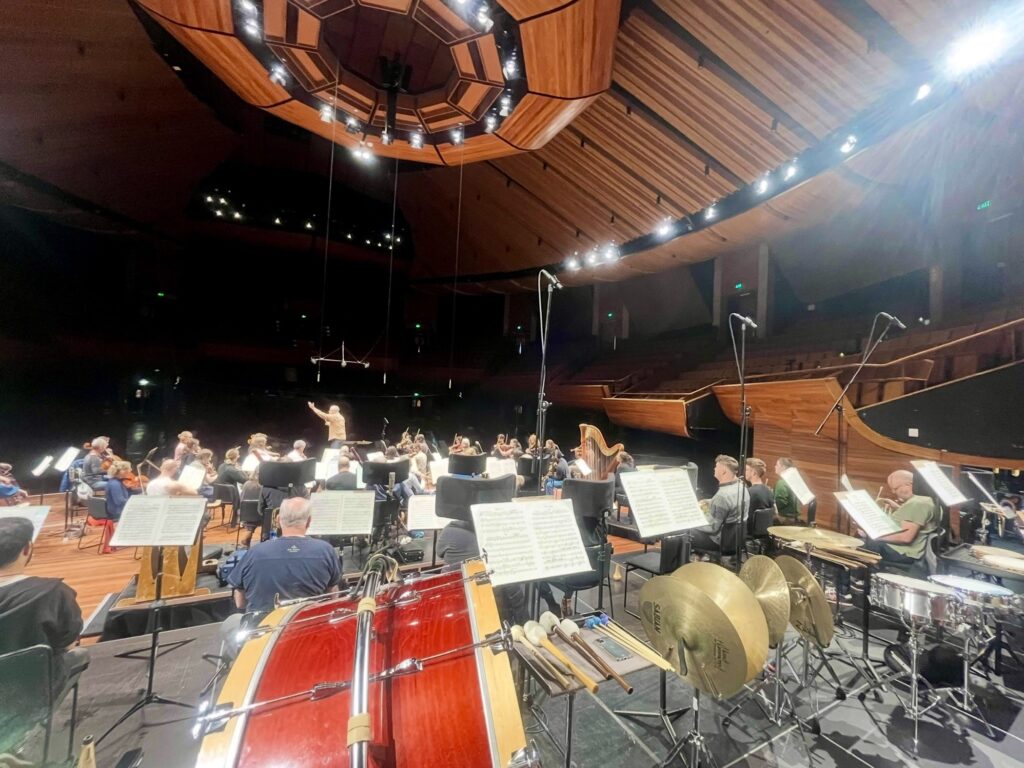 Orchestra Wellington with Marc Taddei rehearsing Shostakovich
Orchestra Wellington with Marc Taddei rehearsing Shostakovich
FAVOURED SON – Orchestra Wellington 2025
SHOSTAKOVICH – Symphony No.2 in B Major, Op.14 “October”
TCHAIKOVSKY – Piano Concerto No. 3 in E-flat Major Op. 75
RIMSKY-KORSAKOV – Scheherazade Op.35
Jian Liu (piano)
Orpheus Choir of Wellington (Music Director: Brent Stewart)
Orchestra Wellington (Concertmaster: Amalia Hall)
Marc Taddei (conductor)
Michael Fowler Centre, Wellington
Saturday, 7th June, 2025
It goes without saying these days, you might think – but there was very little that was usual or routine about this latest Orchestra Wellington concert. And even when everything might seem pre-announced and sewn up and ready to go, there’s always something that feels special in the air, a kind of anticipatory excitement involving what COULD happen, or emerge from up the collective sleeve of the orchestra and Marc Taddei. So, this was the case when we all trooped into the MFC for the year’s second Orchestra Wellington concert featuring a work by Dmitri Shostakovich in honour of the composer’s 50th anniversary year, and this time alongside two works by fellow-Russian composers of a previous era, Pyotr Tchaikovsky and Nikolai Rimsky-Korsakov – on paper alone, a colourful combination indeed!
We knew a piano concerto was scheduled, a happening almost always figuring as part of a concert’s first half – but where was the instrument? – languishing, unattended, to one side, as if forgotten, or its accustomed role perhaps topsy-turveyed! Something was definitely afoot, as up above, a stream of choristers were filing into their choir positions – were they here as listeners? It didn’t seem so as the figures stood alert, and waiting – and on came conductor, Marc Taddei, acknowledging the applause, but without any further ado, turning to the orchestra, and almost imperceptibly, setting the music in motion (the choir would surely have sat down, though I can’t remember them actually doing so) – like everybody else in the hall I was mesmerised by, firstly, the silence, and then what seemed like a distant subterranean rumbling, the origin of which was the bass drum softly beginning the work before being joined by the lower strings of the orchestra! Such rapt playing! – a charged quietitude with a quality not unlike that which I remember Russian conductor Vassily Petrencko getting from the NZSO players during the first movement of the same composer’s “Leningrad” Symphony, back in 2011! Incredible concentration on the part of all of these musicians, something one seemed to “feel” as well as actually hear……
By this time we had figured out the game-plan, this music by Shostakovich actually being a New Zealand premiere of the work, the playing as committed to the composer’s cause as it seemed possible to be! Those pianissimo sounds gradually coalesced into something which seemed as much “interior” as “other-worldly”, as if from either deeply within or a long distance away, the sounds gradually quickening their impulses as the strings make their entrances section by section, creating a “muted hive of activity” to which the brasses joined in what sounded like the same manner – most extraordinary! – only the trumpet plays something that could be called a “theme”, gradually joined by the flute and piccolo’s similarly protruberant lines, and with the tuba adding its sagacious voice to the commentary – gripping stuff!
Suddenly, the lower strings began a dancing rhythm which gradually built up as the trajectories spread throughout the orchestra, like a kind of “danse macabre”, capped off by a fusillade of percussion, the timpani goading firstly the lower strings and then the tuba into droll responses. After a great circular wave of scintillating impulse broke through and over the entire orchestra, the solo violin began what sounded to my ears the work’s most extraordinary sequence, an impudent dance-like, fugal-sounding elaboration into which the players joined one by one, the music again ‘”gathering in” the instrumental voices as the augmented body of sounds swept onwards and into a percussion-led precursor (?) of something like a “Movietone News” trailer – outrageous, but totally mesmerising!
Consternation! – had these trajectorial efforts sapped the music’s strength? Were the pulses fading? What were these desolate tones and hollowed- out brass notes? Had all hope faded? The clarinet elaborated further, joined by the solo violin, the music then climbing into the ether as if in farewell – it was the kind of moment which could have either completely broken, or reached out and salvaged human resolve! Into the void came a crashing blast of percussion and a factory siren! – sensation aplenty, as the choir leapt to its collective feet and began to intone the (dreadfully banal) words of the poem extolling Lenin and Socialism! But to my non-understanding sensibilities those massed vocal tones sounded splendidly forthright, optimistic and noble, the orchestral instruments boldly and grandly colouring the utterances, leaving one’s imagination to freely invent felicitations of meaning and import in accord with one’s own inclinations – not unlike a Catholic worshipper who would admire the beauties of the old Latin Mass though unable to understand a word of it!
I loved the instrumental passages where the horns’ heroic calls were augmented by the trumpets and lower brasses, all decorated by the winds – all very uplifting! A cymbal crash and the choir ecstatically re-entered, the full orchestra panoply helping the voices to celebrate! The music flirted briefly with the return of the opening “hive of activity” music before being redirected by the factory siren to the business in hand! More exultation, culminating in a “Listen to this announcement” percussion roll, the voices forcefully shouting rather than singing the words of praise for “October, the Commune and Lenin”. Massive Mahler-like crashes, wailings from the siren, and a final brass-led peroration brought the work to a tumultuous close! In every which way this seemed to me a fantastic performance, taking the music where its composer intended, far and beyond the platitudinous dogmas of the words and into the Beethoven-like realms of the human spirit. It was a moment to remember and treasure.
How was the remained of the evening’s programme going to fare after such a singular and distinctive outpouring? Part of the answer was to “ease” into more “established” kinds of expression (e.g. the aforementioned piano concerto!) – but not just ANY concerto, any “random rabbit pulled out of the hat” affair! This was a different-again kind of novelty, one continuing the enterprise of Orchestra Wellington in a tangential direction, though maintaining a “Russian” profile. Tchaikovsky’s Third Piano Concerto has always had “Cinderella” status compared with its two far more worldly sisters through being styled as something of an “unfinished failure” right at the outset of its career, even by the composer, who wrote on the score of the completed first movement “The end – God be thanked!”. All of this has prompted less-than-enthusiastic attitudes towards the work, despite it receiving some superlative recordings (which I’ve spent a bit of time this morning checking out!). Before the concert I had even been wondering whether something else could have been found, another, perhaps more rewarding concertante work with a Russian flavour (a list including works by Arensky, Lyapunov, Rubinstein, or even Stravinsky’s “Capriccio”.). As it turned out, I simply needn’t have worried!
Marc Taddei introduced our soloist to the platform, one who had recently received a good deal of independent acclaim after being proclaimed as Te Manu Taki Tuauki o te Tau – Best Classical Artist in the Aotearoa Music Awards 2025. This was Jian Liu, already a favourite with audiences through numerous previous appearances, though his award made this occasion all the more special and eagerly awaited. Thanks to his brilliant pianism and the sterling support of conductor and players, I was able to “rediscover” this somewhat maligned Tchaikovsky work fragment and regard it afresh as a jewel worth preserving.
All through the lyrical passages of the opening, shared by both soloist and orchestra, it made just the right kind of “sit-up-and-take-notice” impression, which continued into the dance episodes instigated by Liu’s dancing fingers the excitement reinforced by Taddei’s and his players’ support. The orchestral tutti that followed made the most of the melodic fragments created by these interactions, after which the piano gave us an elaborate cadenza, jaw-dropping in some of its demands, even if, towards the end one sensed the repetitions began to take something of a desperate “where’s the way out?’ kind of aspect for the composer! It was a case of the cavalry to the rescue, as the pianist’s scintillations descended from the keyboard’s precipitous heights to be gathered in by the orchestra and danced all about in triumph! A heartfelt “sighing” theme was shared by Liu with the players until the timpani called everybody to order for a final dance, one we’d previously heard and welcomed like an old friend, one in which piano and orchestra seemed to link as partners for a last hurrah before the culminating unison chords brought down the music’s curtain.
The pianist was justly recalled to the platform after the concerto, electing then to delight us even further by playing an encore – one which both bewitched and frustrated me because of the piece being something I “knew” but simply couldn’t name – was it Schumann, or Grieg, or, perhaps, Dvorak? I had to be “helped” in this instance (thanks are due to Marc Taddei!), because it was actually more Tchaikovsky , and from a work I had heard but obviously didn’t know well enough – “Autumn” from “The Seasons” (some editions call it “The Months”, as there are twelve individual pieces) – this one was enchanting in every way!
By that stage, it was obviously OK for the concert to revert to “standard repertoire, more of which in a moment – firstly, yet another “surprise” was in store for us, with Marc Taddei paying both a spoken and musical birthday tribute to one of Orchestra Wellington’s staunchest supporters, John Comerford, by directing a rendition of Igor Stravinsky’s “Greeting Prelude”, which uses the well-known “Happy Birthday” tune in what it’s composer described as a kind of “singing telegram” (Stravinsky had originally written it for the conductor Pierre Monteux, who had conducted the premieres of both Petrouchka and The Rite of Spring!). Elsewhere he had referred to the music’s use of serial techniques in a diatonic kind of context as “a very learned prelude, all fugue and canon”! For most of us it was enough that the famous natal day tune was even recognisable!
From these cerebral hi-jinks we then switched to one of the most popular of all classical repertoire pieces – but what repertoire! Rimsky-Korsakov’s “Scheherazade” has been a “go-to” piece for me over the years, never losing its charm or magic! – and in a good performance it can define a “gold standard” of romantic orchestral achievement. It got away to an excellent start this evening with the appearance of the orchestra’s concertmaster Amalia Hall clad in a stunning red dress as befitted her “storyteller with violin” status – in terms of apparel that was as far as she needed to be different in her role, especially as the history of “Scheherazade” on record over the years is bedecked with a series of LP covers that feature very much “of-their-time” culturally cringe-like images of definitely non-Arabic-looking women, each of whom was masquerading as a bona fide Scheherazade!
To the music! – and Marc Taddei conducted what I thought was a richly-detailed performance, bringing out many a salient detail to enhance the piece’s general atmosphere and story-telling ambience – the Sultan’s fearful motto theme right at the work, for instance, had plenty of menace warning Scheherazade to be on her guard and keep her husband-slash-executioner entertained, interested and eager for more – Amalia Hall’s violin entry as Scheherazade was the most silvery and enchanting one could imagine, enhanced by the harp’s equally magical accompaniment. Detailed though it all was I thought the music’s trajectories in the first movement depicting Sinbad’s ship a little sluggish at first, wanting some “setting out on the voyage” kind of excitement and urgency in places – though the strings “dug into” their phrases, I wanted a bit more forward-surging rise and fall from the ship going through those waves as palpably as could be made. But the various instrumental solos – solo ‘cello, horn, flute, oboe, clarinet – were superbly taken, and the solo violin never missed a storyteller’s nuance as it all unfolded – and the second big “tutti” had more oceanic urgency to match the girth, with the trumpets capping off the tumultuous figurations most excitingly.
The second movement was notable for the many instrumental characterisations – the silvery Scheherazade-violin at the beginning, this time with a touch of excitement denoting a different episode of the story, begun by a great bassoon solo, furthered by the oboe and harp, and then by the strings, delivering the melody with ever-increasing urgency! Great work from the trombone and the trumpet, exchanging calls with the strings and building up terrific excitement! And what a plethora of magical detailings followed! – a clarinet over pizzicato strings, an piccolo piping its presence in “wait for me” way (and, though I was sure somebody missed an entry here, the music kept up its momentum!), brass and woodwind exchanging signals, strings climbing skywards as if sailors were ascending masts to their lookouts, with calls resounding between brass, winds and strings as the excitement grew – it all drove the story onwards, leaving all of us hanging on for dear life, right up to that forlorn flute solo, echoed by the horn (lovely “stopped” tones!) violin, and cello, all of which then made way for the whirlwind ending!
I thought the slow movement here (“The Young Prince and the Young Princess”) one of the loveliest I’d ever heard, the melody shaped to perfection, with the prince’s voice neither too ardent nor too languid at the beginning. A pity I found the side-drum accompanying the princess’s reply just too soft to really “tell” – hard to play and not sound too “percussive” I would imagine! – of course, with the clarinet having the melody, the accompanying “whisperings” were ultra-poetic! And all was extra-gorgeous at the reprise of the Prince’s melody with the “cascading violins” borrowed from Scheherazade’s melody (is THAT where Mantovani got the idea from for his strings?) beautifully “echoed” by the oboe solo, and with the climax given plenty of romantic warmth but not too much! The horn gratefully introduced the “epilogue” (on my very first recording of Scheherazade I remember in retrospect this whole section being cut most cruelly right up to the last descending woodwind phrases), here unedited and complete!
A fast and furious introduction to the finale caused our Scheherazade some consternation, with the Sultan’s theme now sounding impatient and foreboding, and the solo violin suitably agitated in response, and quickly leafing through her diminishing repertoire to come up with something! Then, with a flourish we were off on a wild ride, like a “cops and robbers” chase through a crowded exotic market-place – such infectious excitement! When this ran its course, Scheherazade plunged into her “piece de resistance”, the wrecking of Sinbad’s ship in a furious storm – “the ship is dashed to pieces by the waves on a rock surmounted by a bronze warrior!” Nobody could question the percussionists regarding the vigour of their onslaught, here, but I wondered whether the mighty bass drum hammer-blows could have best been gradually “built up” towards the climactic moment in tandem with the final gong-stroke – here, the energy seemed to have already been spent when the tam-tam was sounded – just a thought!
The epilogue was as satisfying as I’ve ever heard, with the sultan’s voice no longer threatening, but contentedly rumbling in accord with his storyteller, whose own violin-voice ascended repeatedly and beatifically (more securely with each ascent) into the skies and enshrining her place for all time as a true model of constancy and devotion. We were left ecstatic and transfigured after this, with plenty of agreement afterwards that it had been an evening of remarkable range and scope of repertoire and expression!
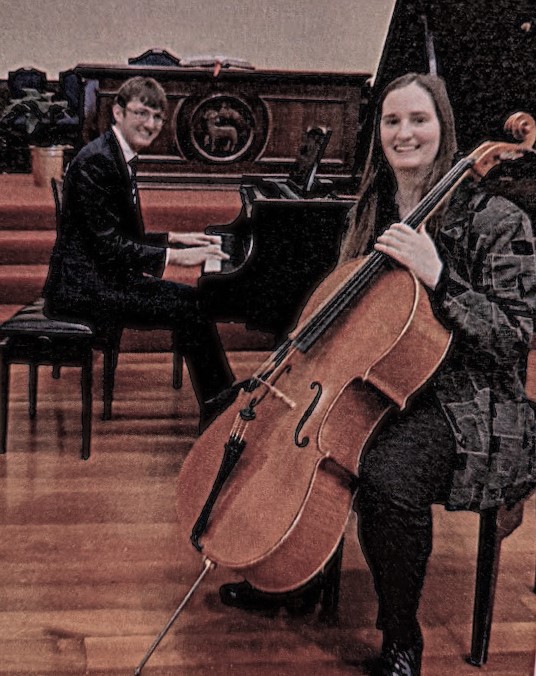
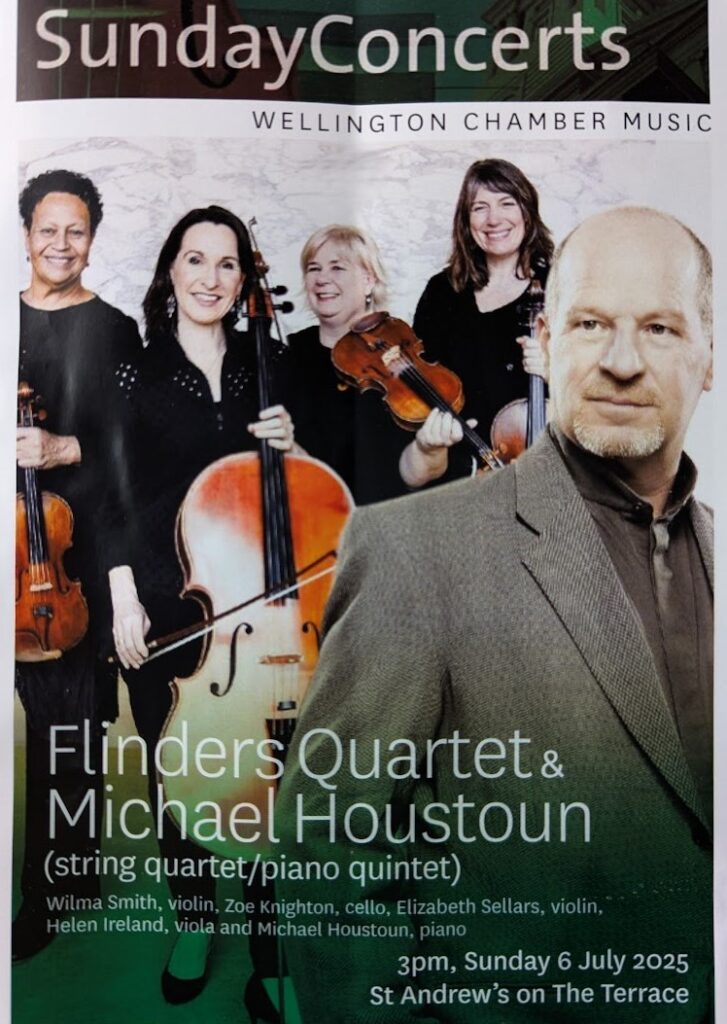
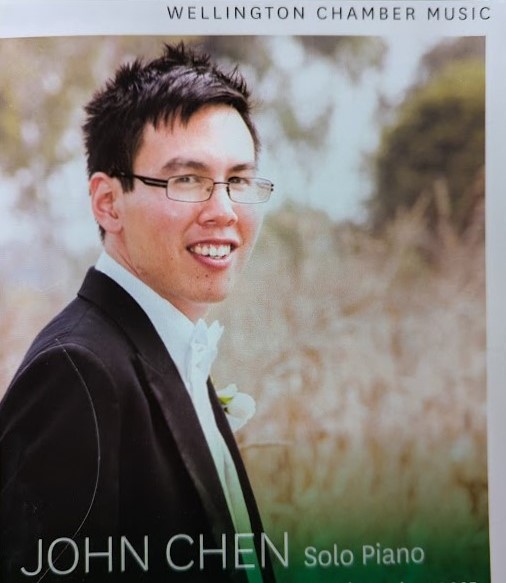 John Chen – French Piano Music Recital
John Chen – French Piano Music Recital Dmitri Shostakovich
Dmitri Shostakovich Orchestra Wellington with Marc Taddei rehearsing Shostakovich
Orchestra Wellington with Marc Taddei rehearsing Shostakovich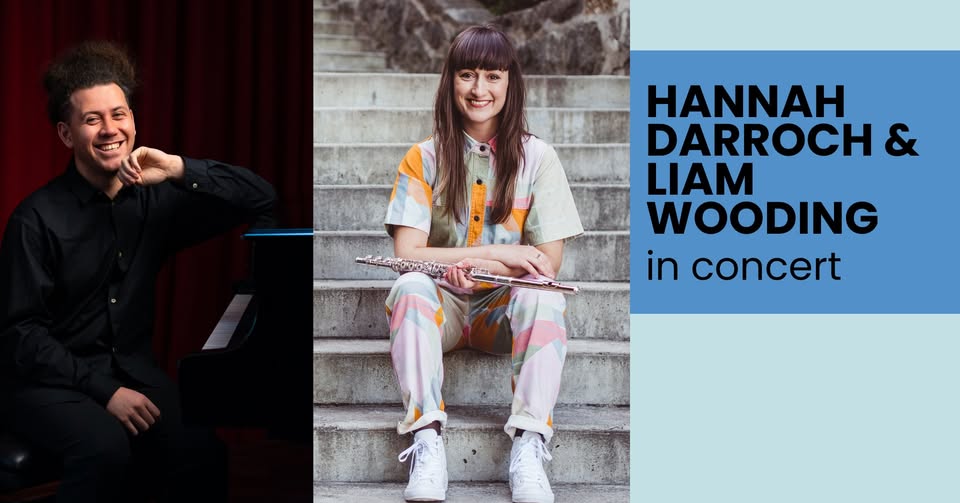
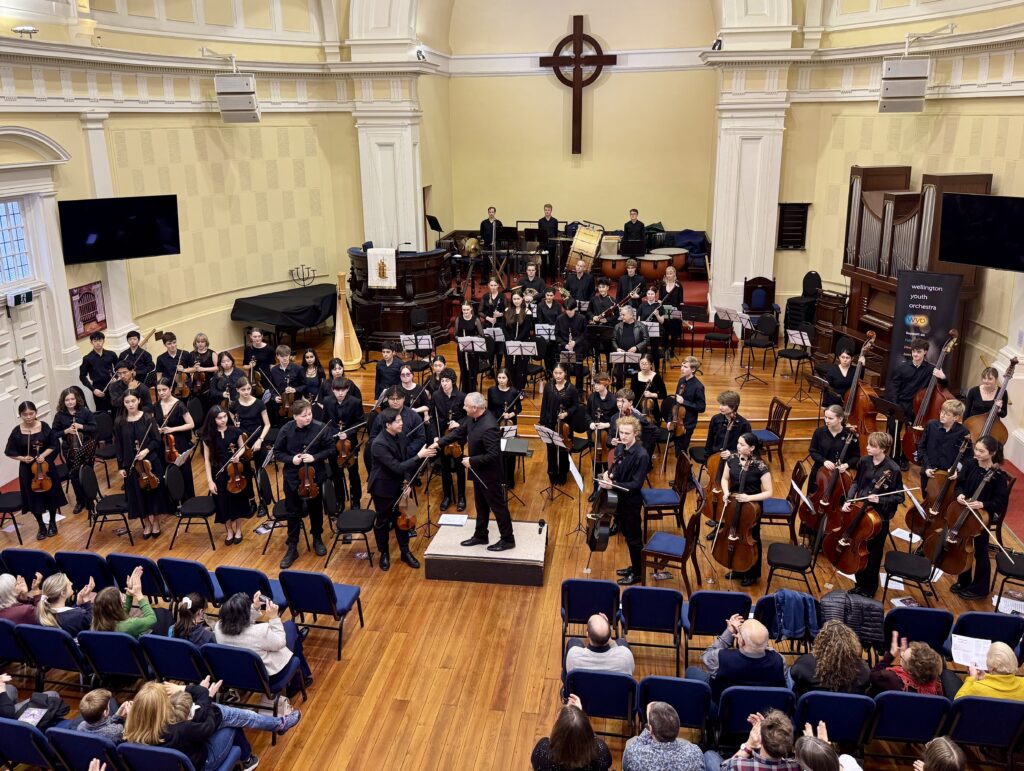 Wellington Youth Orchestra – Conductor Mark Carter congratulates WYO leader Alan Kao at the conclusion of the “Fanfare and Fantasy” concert on Saturday May 3rd, 2025
Wellington Youth Orchestra – Conductor Mark Carter congratulates WYO leader Alan Kao at the conclusion of the “Fanfare and Fantasy” concert on Saturday May 3rd, 2025